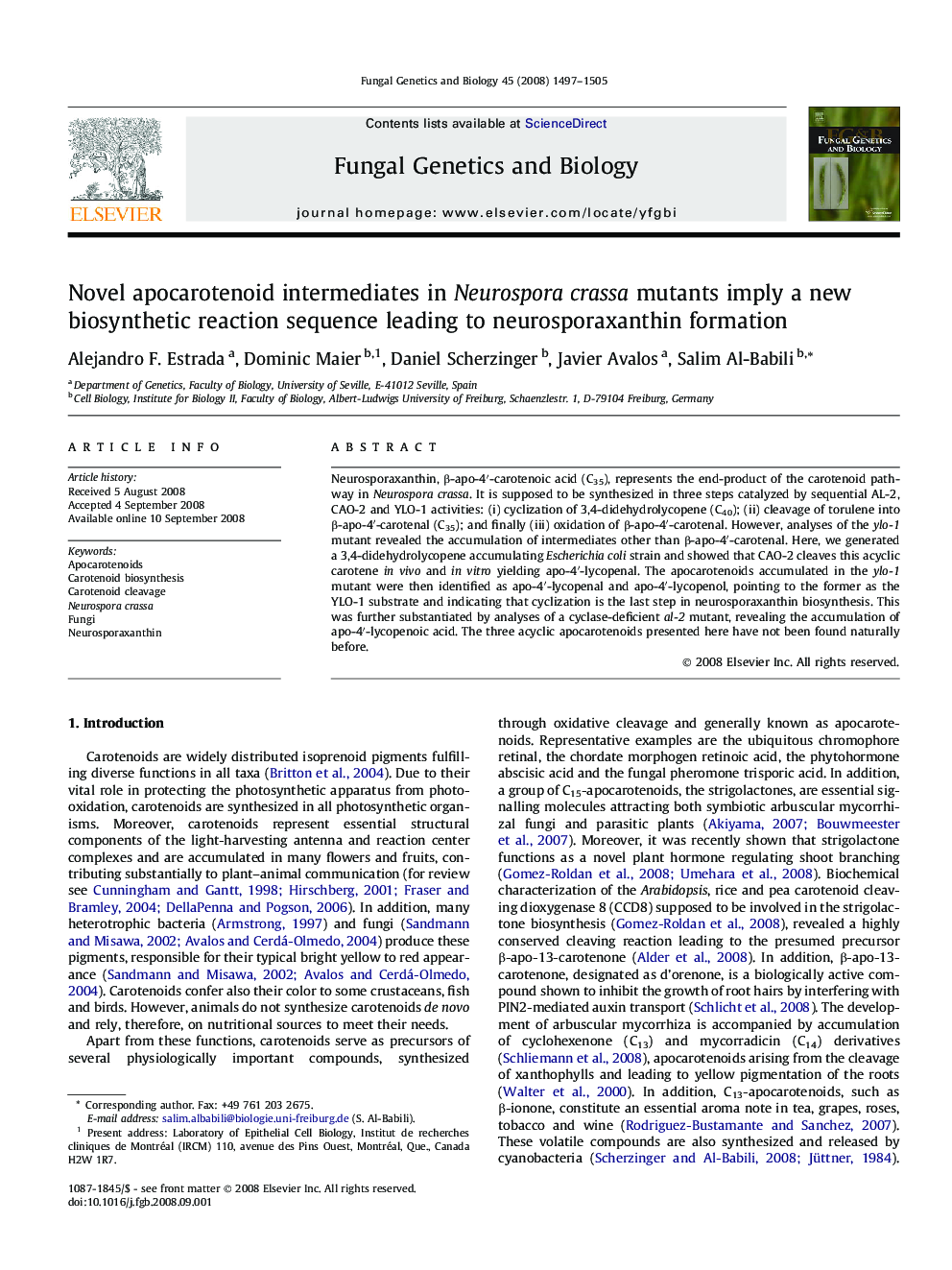| Article ID | Journal | Published Year | Pages | File Type |
|---|---|---|---|---|
| 2181394 | Fungal Genetics and Biology | 2008 | 9 Pages |
Neurosporaxanthin, β-apo-4′-carotenoic acid (C35), represents the end-product of the carotenoid pathway in Neurospora crassa. It is supposed to be synthesized in three steps catalyzed by sequential AL-2, CAO-2 and YLO-1 activities: (i) cyclization of 3,4-didehydrolycopene (C40); (ii) cleavage of torulene into β-apo-4′-carotenal (C35); and finally (iii) oxidation of β-apo-4′-carotenal. However, analyses of the ylo-1 mutant revealed the accumulation of intermediates other than β-apo-4′-carotenal. Here, we generated a 3,4-didehydrolycopene accumulating Escherichia coli strain and showed that CAO-2 cleaves this acyclic carotene in vivo and in vitro yielding apo-4′-lycopenal. The apocarotenoids accumulated in the ylo-1 mutant were then identified as apo-4′-lycopenal and apo-4′-lycopenol, pointing to the former as the YLO-1 substrate and indicating that cyclization is the last step in neurosporaxanthin biosynthesis. This was further substantiated by analyses of a cyclase-deficient al-2 mutant, revealing the accumulation of apo-4′-lycopenoic acid. The three acyclic apocarotenoids presented here have not been found naturally before.
